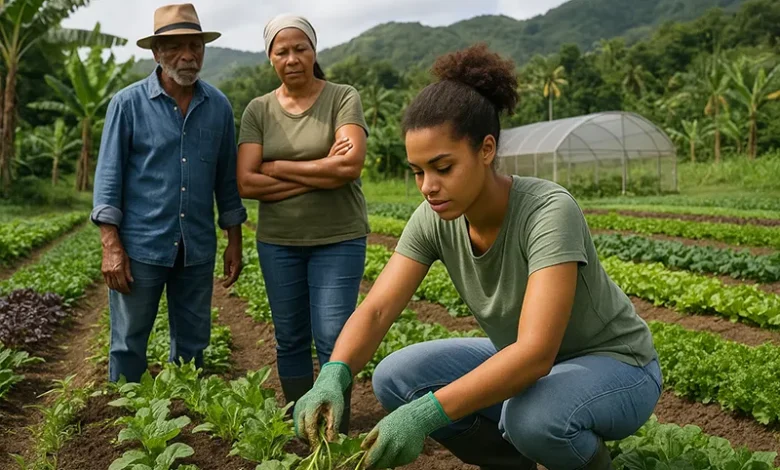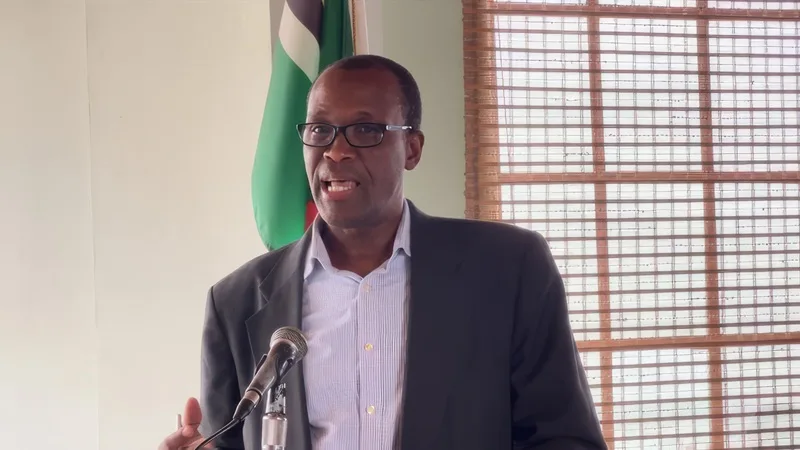Sustainable Agriculture in Dominica

Sustainable agriculture in Dominica has long been a central component of food production, environmental stewardship, and rural livelihoods. Given the island’s steep terrain, tropical climate, and vulnerability to hurricanes, farming practices that maintain long-term productivity without degrading natural resources are not just strategic but essential. In recent decades, the movement toward sustainability has expanded, blending traditional Kalinago knowledge, smallholder practices, and modern conservation techniques. Government policy, global climate initiatives, and local resilience efforts in the aftermath of Hurricane Maria further shape this shift.
History and Evolution of Sustainable Agriculture
Agriculture in Dominica has historically centred on smallholder production. During the colonial period, large estates grew sugar and later bananas, but by the mid-20th century, Dominica’s land tenure patterns had shifted toward small farms. Farmers often practised mixed cropping, agroforestry, and other methods that, although not labelled as “sustainable” at the time, closely aligned with what we now recognise as ecologically sound practices.
The 1980s and 1990s witnessed an increased awareness of the need for land conservation, driven by concerns over deforestation, pesticide use, and soil erosion. Hurricane David (1979), Tropical Storm Erika (2015), and Hurricane Maria (2017) exposed the vulnerabilities of conventional monoculture systems. In response, sustainable agriculture began receiving institutional attention. The Ministry of Agriculture integrated soil conservation and climate resilience into its policies, while NGOs began promoting permaculture, composting, and low-input farming.
Practices and Techniques Used
Sustainable agriculture in Dominica is characterised by practices that conserve resources while maintaining yields. These include:
- Agroforestry: Especially in the Kalinago Territory and parts of the eastern interior, where fruit trees and root crops are intercropped under forest cover.
- Organic composting and natural pest control: Used by farmers in Grand Bay, Cochrane, and areas around Castle Bruce.
- Crop rotation and intercropping: Common among hillside farms to maintain soil fertility and reduce pests.
- Contour farming and terracing: Practised in places like Laudat and Giraudel to limit erosion on steep slopes.
- Rainwater harvesting and mulching: Essential during dry seasons, especially on the west coast’s drier microclimates.
These techniques often draw on ancestral knowledge, adapting old systems for modern resilience needs.
Agencies and Institutions Supporting Sustainable Agriculture
Sustainable agriculture in Dominica benefits from a network of local and international support entities:
- Ministry of Agriculture, Fisheries, Blue and Green Economy: The principal policy and technical support arm.
- Inter-American Institute for Cooperation on Agriculture (IICA): Assists in agroecology, climate resilience, and farmer training.
- FAO (Food and Agriculture Organization): Provides capacity-building, disaster response programs, and seed bank initiatives.
- CARDI (Caribbean Agricultural Research and Development Institute): Works on root crop resilience and seed preservation.
- Dominica Organic Agriculture Movement (DOAM): Advocates for certification, local awareness, and organic practices.
- GEF Small Grants Programme: Provides funding to community-based sustainable projects.
- National Development Foundation of Dominica (NDFD): Offers microloans and technical assistance to farmers transitioning to sustainable methods.
Additionally, projects under the Caribbean Biodiversity Fund and Climate Resilience Execution Agency for Dominica (CREAD) include sustainable farming components that link agriculture to national resilience-building efforts.
Geographic Focus and Local Initiatives
Sustainable agricultural initiatives are visible across the island. Key areas include:
- The Kalinago Territory, where farming systems incorporate agroforestry, herbal medicine cultivation, and traditional ecological knowledge.
- Grand Bay and Bellevue Chopin, sites of organic demonstration farms and composting systems.
- Morne Prosper and Giraudel, known for their floral and vegetable production using low-input techniques.
- Syndicate and Londonderry, where larger holdings are now trialling cover cropping and crop diversification.
Community-based groups, such as the Bellevue Chopin Organic Farmers Group, Cochrane United Farmers Group, and Petite Savanne Resettlement Farmers, also implement and promote sustainable agriculture post-disaster.
Government Policy and International Commitments
The National Resilience Development Strategy includes specific reference to sustainable agriculture as part of Dominica’s vision to become the world’s first climate-resilient nation. This aligns with SDG 2 (Zero Hunger) and SDG 13 (Climate Action). In addition:
- Dominica’s Climate Resilience and Recovery Plan (CRRP) prioritizes agriculture as one of the twelve key systems for climate adaptation.
- The National Agriculture Policy addresses climate-smart production, reduced synthetic inputs, and expansion of organic exports.
- The Micro and Small Business Enterprise Act offers incentives for green agribusinesses.
Though sustainable agriculture is still emerging as a significant economic force, its integration with disaster recovery and climate policy has made it an increasingly visible pillar in national planning.
Market and Economic Impact
While exact data are evolving, estimates suggest that over 3,000 smallholder farms now use at least one sustainable technique. A 2021 survey by IICA indicated that approximately 20% of surveyed farmers practised certified organic or low-input farming. Export volumes remain low, but the domestic demand for pesticide-free and locally sourced produce is growing. Community markets in Roseau, Portsmouth, and Castle Bruce now include organically grown or sustainably sourced items.
Recent efforts have also linked sustainable farming to agritourism, with farms like Bois Cotlette and Papillote Gardens incorporating eco-education components. These serve both income diversification and public outreach goals.




